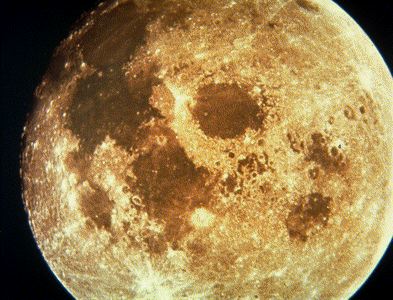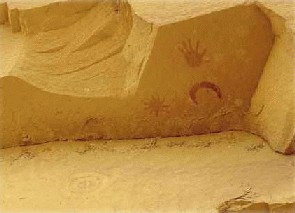Search This Blog
Friday, December 31, 2010
Thursday, December 30, 2010
Tuesday, December 28, 2010
Thursday, December 23, 2010
Wednesday, December 22, 2010
Press (12/29/10) Rotture
When: Wed., Dec. 29, 9 p.m. DANNY DELEGATO (SOLO ACOUSTIC)
Price: $5
Price: $5
"Over their four-year history the Hugs have often been compared to the Dandy Warhols. It makes sense: Both were young Portland groups who effectively channeled (or shamelessly aped, choose your verb) popular bands of yesteryear, garnering them buzz everywhere but their hometown, where they were mostly met with sometimes hostile indifference. "
"If the comparison continues to be apt in another three years, Danny Delegato and crew will have their "Bohemian Like You" moment and have the opportunity to give Stumptown the finger for good, and I wouldn't completely blame them. "
"I suspect that part of what has always put fans off of the Hugs (and, in part, the Dandy's) has been the way they sprung out the forehead of Cleveland High pre-formed, hooky and cuddly as hell. Portland has never felt ownership of this band, and they never seemed to need its support in the first place."
"If the comparison continues to be apt in another three years, Danny Delegato and crew will have their "Bohemian Like You" moment and have the opportunity to give Stumptown the finger for good, and I wouldn't completely blame them. "
"I suspect that part of what has always put fans off of the Hugs (and, in part, the Dandy's) has been the way they sprung out the forehead of Cleveland High pre-formed, hooky and cuddly as hell. Portland has never felt ownership of this band, and they never seemed to need its support in the first place."
DAVE BOW (Portland Mercury)
Saturday, December 18, 2010
NEVER ENDING DEBT

"Now that all recent bond auctions have settled, and with no further bond auctions scheduled until the rest of the year, we can look at the final tally of US total debt: the number - $13,879,785,000,000. This represents a $1.568 trillion increase in total US debt held by the public for 2010, and $4.388 trillion since the collapse of Lehman.
This is in essence the cost to US taxpayers to keep the financial system solvent, as the US has become the biggest marginal leveraging actor in the world, with everyone else, notably US consumers, and Europe, doing all they can to strip as much debt as they possible can. Of course, since this money does not have to be repaid any time soon, or ever, nobody seems to mind, especially not the politicians in Washington.
As we have said before, and pro forma for the Obama tax deal, we expect total debt issuance in 2011 to accelerate once again, and to hit just under $2 trillion, putting total US debt at the end of next year at around $16 trillion. We also fully expect the Fed to monetize the bulk of that issuance. We can't wait to hear the positive spin on this one."
Study Of The Stars




Early people noticed constellations of stars in the sky that looked like animals and people, and made up stories about what they thought they saw. In fact, the oldest records we have of astronomical observations are 30,000-year-old paintings found on the walls of caves.
Calendars. The first astronomers created calendars from changes they saw in the Moon. Some ancient people around 5,000 years ago set up large stones to mark the movement of the Sun and other stars.
One of those old observatories is Stonehenge in what we now call England.
Ancient natives of North American lined up circles of stones with the Sun and stars to chart the rising Sun and the begining of summers.
In southern Mexico, the Mayans built special buildings to watch the Moon and the planet Venus. They had a calendar by 800 A.D. that was more accurate than the calendar used in Europe.
Ancient Egyptians depended on the Nile River to flood their fields and make it possible to grow crops. They became the first to use a calendar with a 365-day year after their priests discovered that flooding returned about every 365 days.
Egyptian Pyramids. Ancient Egyptians were very interested in the night sky. In particular, they were drawn to two bright stars that always could be seen circling the North Pole. The Egyptians referred to those stars as "the indestructibles."
Today we know them as Kochab, in the bowl of the Little Dipper (Ursa Minor), and Mizar, in the middle of the handle of the Big Dipper (Ursa Major).
Egyptians associated those two stars with eternity and the afterlife of a king -- a pharaoh. After death, a pharaoh would hope to join those circumpolar stars. Pharaohs were buried in pyramids.
Egyptians aligned their pyramids and temples toward the north because they believed their pharaohs became stars in the northern sky after they died. To assure that a king would join the circumpolar stars, the pyramids were laid out facing due north toward the "indestructible" stars. They thought that aligning the pyramids toward north gave the deceased pharaohs direct access to the northern sky.
Each of the two stars was about 10 degrees from the celestial pole which lay directly between them. When one star was exactly above the other in the sky, astronomers could find a line that pointed due north. That alignment was only true for a few years around 2,500 B.C.
An Egyptian astronomer might have held up a plumb line and waited for the night sky to slowly pivot around the unmarked pole as the Earth rotated. When the plumb line exactly intersected both stars -- one about 10 degrees above the invisible pole and the other 10 degrees below it -- the sight line to the horizon would aim directly north.
However, Earth's axis is unstable. Our planet wobbles like a gyroscope over a period of 26,000 years. Modern astronomers now know that the celestial north pole was exactly aligned between Kochab and Mizar only in the year 2467 B.C. Before or after that date, the Egyptian astronomers would have been less accurate as they tried to mark true north.
The Great Pyramid at Giza is known today as one of the Seven Wonders of the Ancient World. Nearly 4,500 years ago, in the year 2467 B.C., the "indestructible" stars lay precisely along a straight line that included the celestial pole. Research suggests that the Great Pyramid at Giza was constructed within 10 years of 2,480 B.C.
Polaris is today's north star. It was in the wrong position 4,500 years ago to help the pyramid builders.
 Click to enlarge the Moon |
Position Guides. There are stars and constellations that always appear in Earth's northern sky. For instance, the Big Dipper is one of those constellations. Ancient sailors used stars and constellations to guide their travels. Polynesians, for example, sailed among the Pacific Ocean islands by watching stars.
Greek Venus. Early Greek astronomers learned from the Babylonians. The Greek philosopher Pythagoras about 550 B.C. noticed that the so-called evening star and morning star were the same body. Today, we know that body to be the planet Venus.
Sun-centered. The first to suggest the Heliocentric theory of gravitation was the Greek philosopher Aristarchus of Samos in the 4th century B.C. who put forth the then-radical view that Earth and other planets revolve around the Sun.
Flat World. Greeks thought Earth was flat. One described the world as a disk floating inside a hollow ball. However, Greek astronomers later came to think correctly of Earth as shaped like a ball. Others suggested correctly that moonlight was reflected sunlight.
Ptolemy. Ptolemy described Earth as a huge ball at the center of the Universe with objects circling around it. Each planet moved in a separate circle. In his view, the Moon was lowest. Then came Mercury, Venus, the Sun, Mars, Jupiter and Saturn. The stars were farthest out. To explain why planets seemed to change direction, Ptolemy used old calculations by Hipparchus to understand planetary motion. Hipparchus worked about 130 B.C. and Ptolemy about A.D. 150, which suggestes it took 280 years to come up with the complicated scheme used to predict future positions of planets.
Curved Earth. Modern photographs from space show that Earth is spherical. People on one side of the planet don't fear falling off the edge of Earth when they travel to the other side of the planet. We know it is possible to fly around the Earth. From the time of Christopher Columbus, voyagers have experienced the round world.
Pythagoras. The idea of Earth as a sphere was abroad as early as the 6th century B.C. with Pythagoras of Samos.
Aristotle. In the 4th century B.C., Aristotle of Stagira knew the Earth was round because of eclipses observed when Earth passed between the Moon and the Sun.
Eratosthenes. In the 3rd century B.C., Eratosthenes was a Greek astronomer working in Egypt when he noticed the Sun directly over one city cast a shadow in another city 500 miles north. Eratosthenes understood correctly that meant Earth's surface is curved. He calculated correctly that Earth is a ball about 25,000 miles around.
Arab Astronomy. After Ptolemy, Greek science faded. Fortunately, a large Arab empire developed from 632 A.D. and Arab astronomers discovered the old Greek books on science and mathematics. They translated those works into Arabic and then improved on the Greeks.
al-Battani. For instance, al-Battani working about 900 A.D. devised new ways of calculating planetary positions. If it hadn't been for Arabs, Greek science would have been lost.
Astrolabes. "Star-finders" or astrolabes were created by Arab astronomers to solve complicated astronomy problems. One side of an astrolabe contained a detailed star map.
 Click for more Anasazi art |
China. Chinese astronomers wrote about a "guest star" in the constellation Taurus that became four times brighter than Venus and was visible in daylight for 23 days. The yellow colored "guest star" was visible to the naked eye at night for 653 days.
Anasazi. It is thought to have been recorded in pottery by Anasazi Indian artists living on land we now call Arizona and New Mexico, and by the Mimbres Indians of New Mexico.
Fujiwara. A Japanese poet Sadiae Fujiwara wrote about the star Zeta Tauri.
Euro tune out. European astronomers apparently took no interest, or at least no records of European or Arab observations of the 1054 supernovahave survived to modern times.
Copernicus. Europeans eventually began to translate into Latin the Arabic versions of the old Greek books. However, the Greek Universe then seemed too complicated to European astronomers.
The Polish astronomer Copernicus decided during the 16th century that it would be simpler to place the Sun at the center of the Universe with planets circling the Sun. That meant Earth also would circle the Sun. Astronomers argued about Copernicus' theory for decades.
Tycho Brahe. European astronomers continued to discover errors in the Greek way of thinking. After Danish astronomer Tycho Brahe in 1572 spotted a bright new star -- a supernova -- the star faded. That contradicted the Greeks who had said the sky never changed. From his observatory in Denmark, Tycho Brahe recorded the position of the supernova so precisely that modern astronomers have photographed its remains.
Brahe also discovered that comets are farther from Earth than the Moon. The Greeks had thought comets were inside Earth's atmosphere.
Galileo. The Europeans continued to look for new ideas. A turning point came with invention of the telescope in Holland. Galileo, an Italian astronomer, heard of the invention and built his own. In 1609, Galileo saw through his telescope that the Moon had craters, mountains, and places that seemed to be seas.
Galileo also saw the planet Jupiter had four moons orbiting it. And he noticed that Venus changed shape in a manner similar to the Moon. With his telescope he could see many stars that were too dim to be seen without it. That concept did not match the Greek view of Earth as the center of the Universe. What we think of today as modern astronomy was born.
21st Century. Of course, today, in addition to optical telescopes, astronomers have instruments to receive radio waves and other kinds of energy from objects too far away to be seen. In recent decades, astronomy instruments have been sent to space from where we learn about things of which the ancient astronomers never dreamed. "
Learn more: encyclopedias astronomy biography wikipedia
| Inner Planets: | Mercury | Venus | Earth | Mars | |
| Outer Planets: | Jupiter | Saturn | Uranus | Neptune | Pluto |
| Other Bodies: | Moons | Asteroids | Comets | The Voyagers | |
| Top of this page | Earth | Ancient Earth | Solar System | STO Cover | Search STO | Questions | About STO | Feedback |
© 2006 Space Today Online
Friday, December 17, 2010
Tuesday, December 14, 2010
Sunday, December 12, 2010
Friday, December 10, 2010
Awakening As One




The Awakening Trilogy includes 3 videos titled The Call, The Plan & The Prophecy which are in fact One; one film, with one message, coming from One Heart, One Mind & One Spirit, Awakening us to our Oneness with ourselves, the Earth, each other… and All.
The Call - "The Awakening Trilogy" Pt. 1 from keith wyatt on Vimeo.
Enlightened Contact with Extra Terrestrial Intelligence
 THE NUTTY NORTHWEST
THE NUTTY NORTHWEST
The Pacific Northwest has long been a place of extraterrestrial interest and has been the locale for some seminal events in UFO history. One of the first and (allegedly) most authentic UFO photos was taken by a farmer in McMinnville. In the 1970s, Marshall Applewhite, the future leader of "Heaven's Gate," passed through Waldport, Oregon and convinced 20 people to sell all their possessions and follow him into space. They went to Colorado instead. But the most famous of these events took place on June 24, 1947, when Pilot Kenneth Arnold was flying over the Cascades and saw a chain of nine "peculiar looking aircraft" flying "like a saucer would if you skipped it across the water."
He timed them going between Mt. Rainier and Mt. Adams in 102 seconds--more than twice the speed of sound and faster than any known aircraft. That same day there were a rash of sightings over Oregon and Washington. And just 10 days earlier, a man in New Mexico had stumbled across some odd wreckage on his ranch outside Roswell. Arnold's sighting inaugurated the era of the flying saucer and, since then, UFOs have sunk deep roots into our culture. Despite the best scientific efforts to dismiss them as swamp gas, ball lightning, mass hallucinations, or wishful thinking, the idea is too powerful. According to the Mutual UFO Network, over 70,000 sightings are reported worldwide every year. (China alone has 400,000 subscribers to the Journal of UFO Research.) What's more interesting is that not all those interested in alien crafts are flaming nutcases.
In 1998, Peter Sturrock, a professor of space science and astrophysics at Stanford University, led a panel of international scientists that concluded UFOs needed further official study. In 1999, the French Government commissioned a study called "UFOs and Defense: What must we be prepared for?" which said the physical reality of unknown aircraft under the control of intelligent beings is "quasi-certain."
And most recently, a group led by ufologist Steven Greer (called "The Disclosure Project") claimed to have 450 ex-military and industrial officials hankering to tell Congress about their covert dealings with UFOs and the little gray men who drive them.
Subscribe to:
Posts (Atom)





































